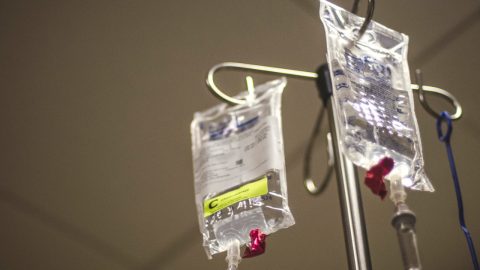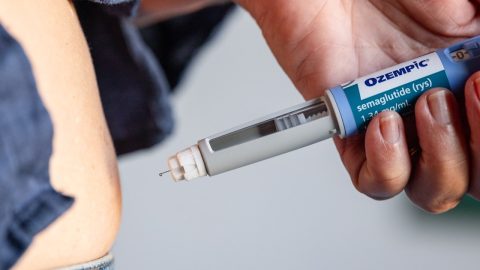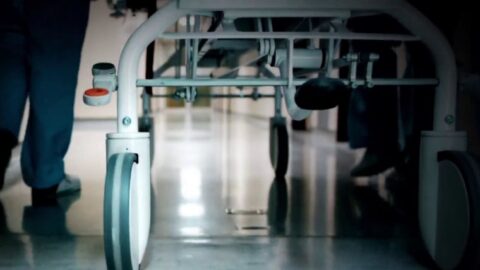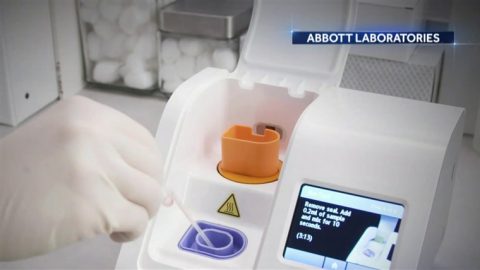A growing number of allergists and public health officials nationwide are pushing to prove that the majority of people who believe they have a penicillin allergy are not, in fact, allergic to the antibiotic — and can use it safely.
The so-called delabeling of penicillin allergies, doctors say, would have major health impacts: faster and more effective treatments for people who have spent their lives avoiding penicillin and related drugs, including amoxicillin, as well as the opportunity to drive down rising antibiotic resistance.
“There is an evolution going on in that all of us are moving from a reactive approach to penicillin allergies to a proactive approach,” said Dr. Cosby Stone, an assistant professor of allergy and immunology at Vanderbilt University Medical Center in Nashville, Tennessee. “That is to say to patients, ‘I think I should test this allergy for you because I think it’s going to cause you a problem, either now or in the future.'”
About 10% of the U.S. population report having a penicillin allergy, according to the Centers for Disease Control and Prevention. In most of those cases, people had long been told they were allergic to penicillin — usually after developing a rash within several days of taking the antibiotic as a baby or toddler.
Other folks just assumed they had an allergy because a sibling or other family member did.
But the CDC says that less than 1% are truly allergic.
“Some of the things that we thought were allergies just aren’t,” Stone said. “The other thing is that even true allergies fade over time. People grow out of them.”
Stone is leading efforts at Vanderbilt to test patients whose charts say they have a penicillin allergy. People are given a small dose of the antibiotic in a controlled environment and monitored for any reaction.
“We have to test 100 people in order to find one” who reacts, Stone said.
While some of those reactions can be severe, most are not. People may develop a rash, diarrhea or feel nauseated.
“Those are just side effects” of the drug, said Dr. Gerald Volcheck, chair of allergic diseases at the Mayo Clinic in Rochester, Minnesota.
Volcheck said that testing people for true penicillin allergies has grown in recent years. “There really seems to be a nationwide push for this delabeling.”
Though there is no national guidance for penicillin delabeling, the CDC has been following the efforts closely and encourages people to seek out testing.
“Removing a false allergy opens up the options for treatment for patients and results in less use of antibiotics that contribute more to antimicrobial resistance,” Melinda Neuhauser, a pharmacist and acute care lead for the CDC’s Office of Antibiotic Stewardship, said in an email.
Doctors must find other antibiotic options when treating bacterial infections in patients with penicillin allergies. But those drugs don’t always work well.
“We know that patients are getting the wrong antibiotics,” Stone said.
Patients who can’t be given penicillin are often given broad-spectrum antibiotics that may not work as well and should be saved as a last resort for the most severe bacterial infections.
Patients may need to be on those other antibiotics longer. Because they’re less effective, it gives bacteria a chance to grow stronger and evolve more ways to resist the drugs that do work against them.
Running out of options
It was just a week ago when Claire Woerner, 33, of Hendersonville, Tennessee, found out during a test at Vanderbilt that she is not, in fact, allergic to penicillin — a diagnosis she’d carried since she was a baby.
Woerner’s mother, she said, saw her daughter covered “head to toe” in hives after first taking penicillin at 18 months old.

The family turned to other antibiotics as Woerner grew older. “My friends were getting strep throat, going to the doctor, getting a penicillin shot and being back at school practically the next day,” she said. “I would have to take 5-, 6-, 7-day courses of antibiotics.”
Other antibiotics also resulted in side effects, such as hives and nausea.
Her doctors were running out of antibiotic options for Woerner, who is prone to sinus infections. She also has asthma, which increases her risk for pneumonia.
Woerner said she first realized the seriousness of the situation several years ago, when a yet another sinus infection sent her to the doctor.
“They were trying to figure out what antibiotic to give me,” she said. “The doctor looked at me and she was like, ‘You need to figure this out. Because if you get really sick, I’m not sure what they’re going to give you to treat you.'”
Vanderbilt’s penicillin testing strategy works in one of two ways, depending on the patient’s history with the antibiotic. The majority of people say they developed a rash after taking penicillin as a child. Those patients are given an oral tablet of amoxicillin, and then watched for up to 90 minutes for a reaction.
A few, Cosby said, might develop another rash. “But having a rash doesn’t necessarily mean that you have an allergy,” he said.
The team treads more carefully with patients who have a history of a severe reaction to penicillin. That process can take up to 3 hours.
They begin with a tiny skin prick of penicillin. If there is no reaction, doctors then do an intradermal test, injecting the antibiotic just under the skin. After that, if there’s still no reaction, patients are given the amoxicillin tablet.
When the doctors at Vanderbilt tested five different versions of penicillin on Woerner, nothing happened. No hives. No rash. No swelling. No itching.
It seems that Woerner either grew out of the allergy or was never allergic in the first place.
“A low-risk penicillin allergy was added to her chart as a 2 year old,” said Stone, who is treating Woerner. “For 30+ years, this meant whenever she got sick, her doctors had to work around it.”
“The ideal scenario would have been to test her penicillin allergy when she was a child,” he said.
Dr. Kimberly Risma, a professor of pediatric allergy and immunology at Cincinnati Children’s Hospital, is taking that approach with her young patients.
The hospital system has tens of thousands of children whose charts list them as having an allergy to an antibiotic, including penicillin, Risma said.
Sometimes children develop some swelling or a rash that can last for several days after receiving an antibiotic. Risma said that is an understandable worry for families, who subsequently ask doctors to give different antibiotics.
It is possible, however, that those allergic symptoms are not because of an allergy to the medication, but more an immune reaction to the infection being treated, Risma said.
In her testing protocol, the kids — sometimes even babies — come in for a dose of liquid amoxicillin and then are watched closely for 48 hours. Her team has been doing this kind of testing since 2016.
“More than 95% of kids are actually not allergic when tested again,” Risma said. “It is a game-changer for families.”









Recent Comments